« Anyone who wants to see the light clearly needs to wipe his eyes first »
Zaraeeb, comprised of 16 individual artworks and largely made up of zoomed-in fragments of his intricate style, is a continuation of eL Seed’s internationally renowned monumental public art installation, Perception, produced in the Cairo suburb of Manshiyat Nasr spanning 50 city buildings. Each piece of Zaraeeb is named after an individual living in Manshiyat Nasr who greatly touched eL Seed while he was on this emotional journey. Manar, Mario, Abanoub, Uncle Bakheet, Uncle Ibrahim, Aunt Farida and many more Zaraeeb people are now eternalized in each fragment of the exhibition. They opened their homes and their hearts to eL Seed and his team during the making of Perception, exhibiting incredible warmth, trust and hospitality from what is normally a closed and fiercely guarded community.
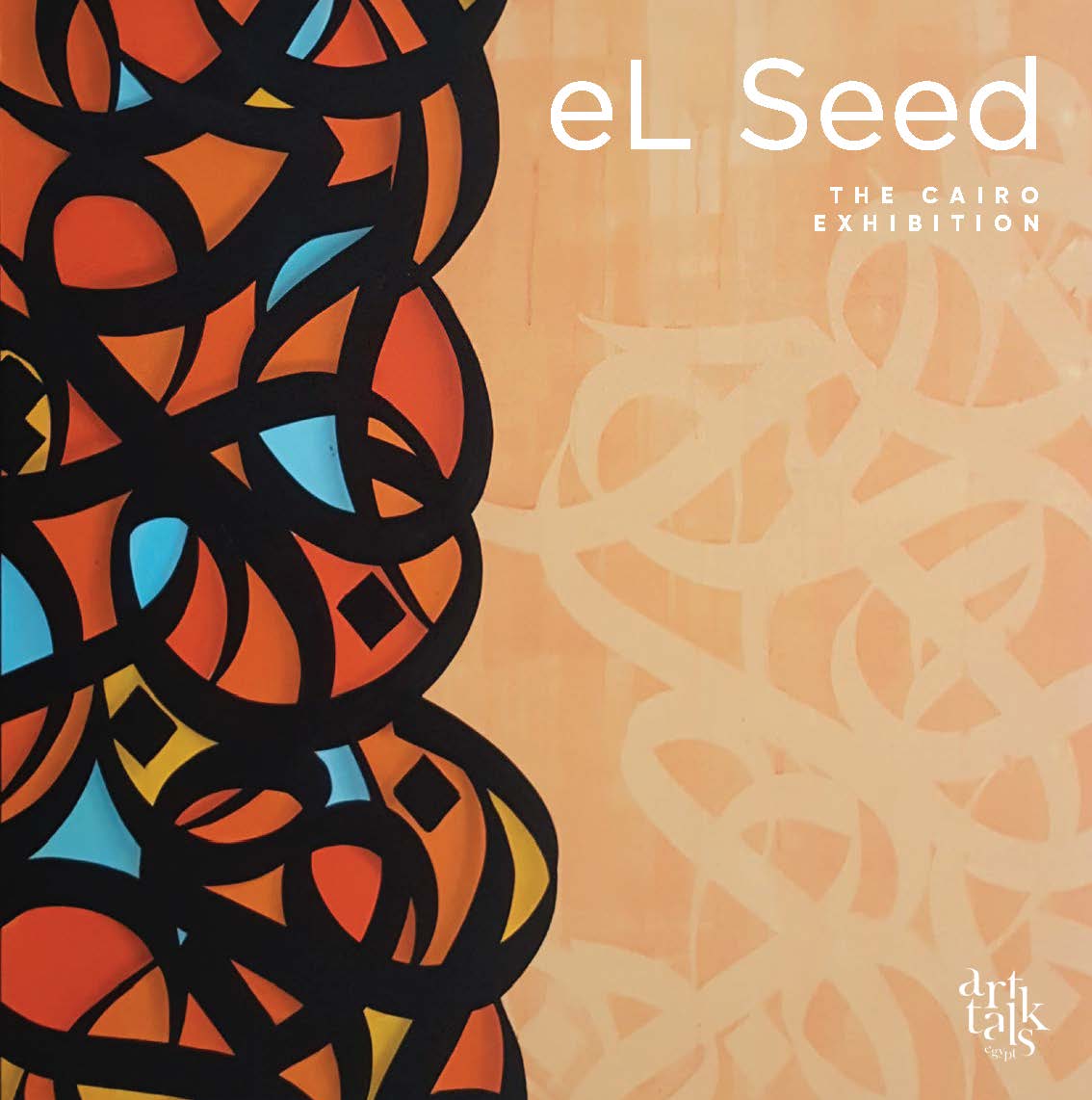
Zaraeeb, comprised of 16 individual artworks and largely made up of zoomed-in fragments of his intricate style, is a continuation of eL Seed’s internationally renowned monumental public art installation, Perception, produced in the Cairo suburb of Manshiyat Nasr spanning 50 city buildings.
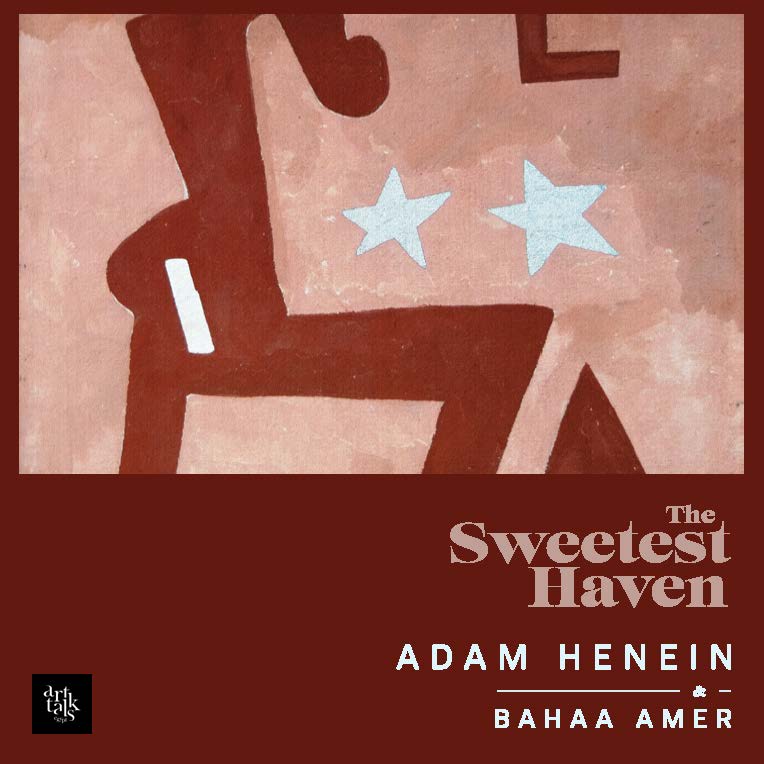
The Sweetest Haven is a one-of-a-kind collaborative exhibition bringing together Adam Henein, the Arab world’s most influential living sculptor and Bahaa Amer, a mid-career surrealist painter.
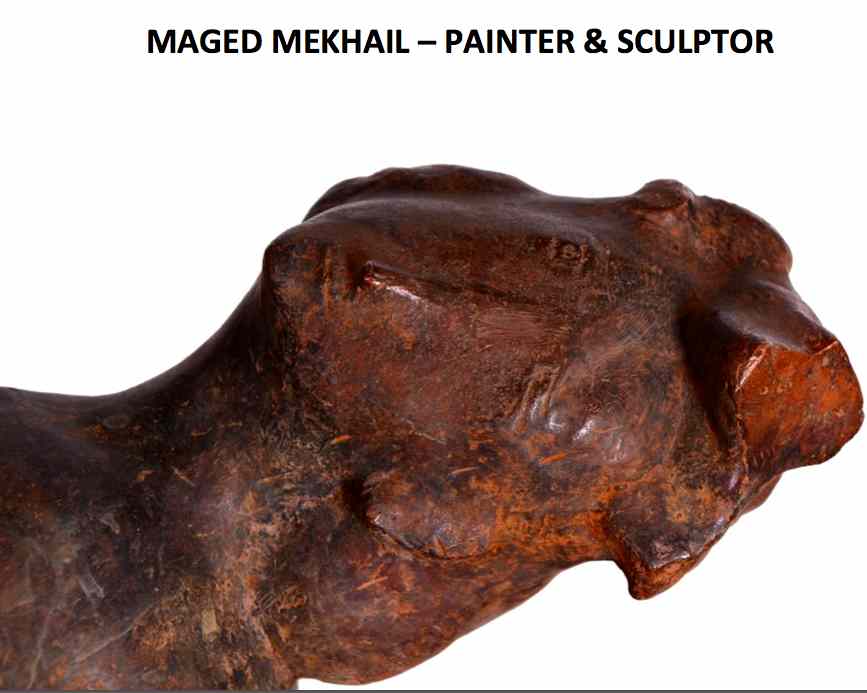
Maged Mekhail transports us back in time and space from Ancient Egypt to Babylon, and from Mesopotamia to further East. Rulers, traders, warriors, men of sciences and prophets crossed roads, ports and oceans seeking larger empires, flourishing trade and the spread of religion. Thousands of years later, their great grand-children are crossing the roads again […]
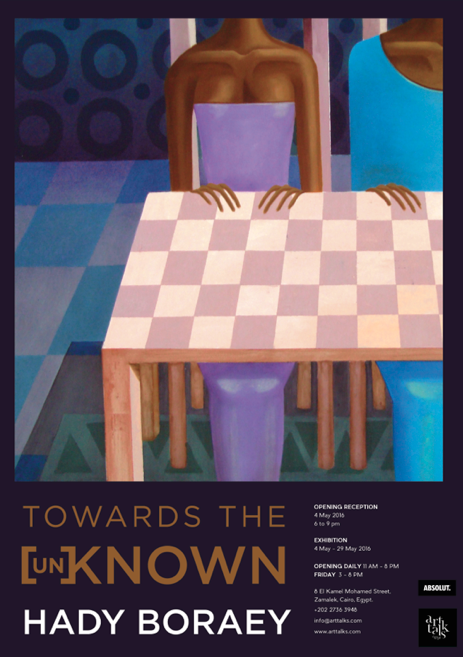
As he carries the weight of the Unknown, Boraey madly wanders. And far away from home, he navigated. He has a story to tell. Once upon a time, he got lost and got back.
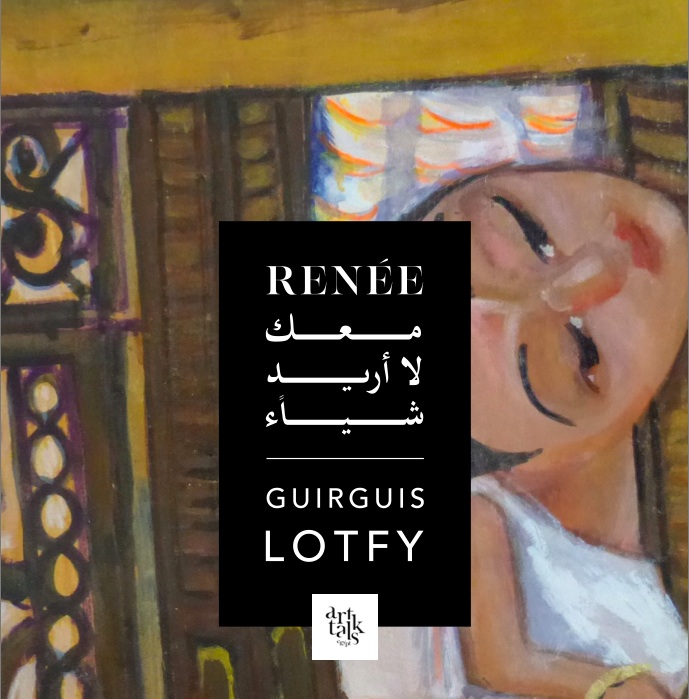
In Renée, Guirguis honours his muse and lifetime companion. And when Guirguis is with Renée, nothing else matters. It is not far fetched to draw the analogy that Guirguis Lotfy is to Egyptian visual arts what Salah Jahin (1930-1986) is to Egyptian poetry. Both celebrate Egypt’s cultural fabric while not shying away from its shortcomings. Tirelessly, Lotfy depicts our feasts, celebrations, rituals and traditions – some still practiced today, others long forgotten. Pharaonic, Islamic or Coptic, his stunning canvases offer a personal take on these little moments of bonding and shared history or on some trivial and mundane scenes with ordinary people. Describing his artistic process as literally looking out his window and painting what he sees, Lotfy shows an indefatigable commitment to his muse and attempts to bring forth both her beauty and contradictions. As he captures the essence of our Egyptian-ness, he reminds us that neither religion nor ideology can tear us apart. Don’t let
yourself be fooled by the apparent simplicity and naivety of his crowded paintings! Guirguis Lotfy seeks to resuscitate an elaborate ancient Egyptian painting technique practiced two millennia ago in religious iconography and the famed Fayoum Portraits. By using bee wax or tempera colors dissolved in egg yolk with some gold leaf, Lotfy ensures the transmission of Coptic art – an identity, rather than a religion.
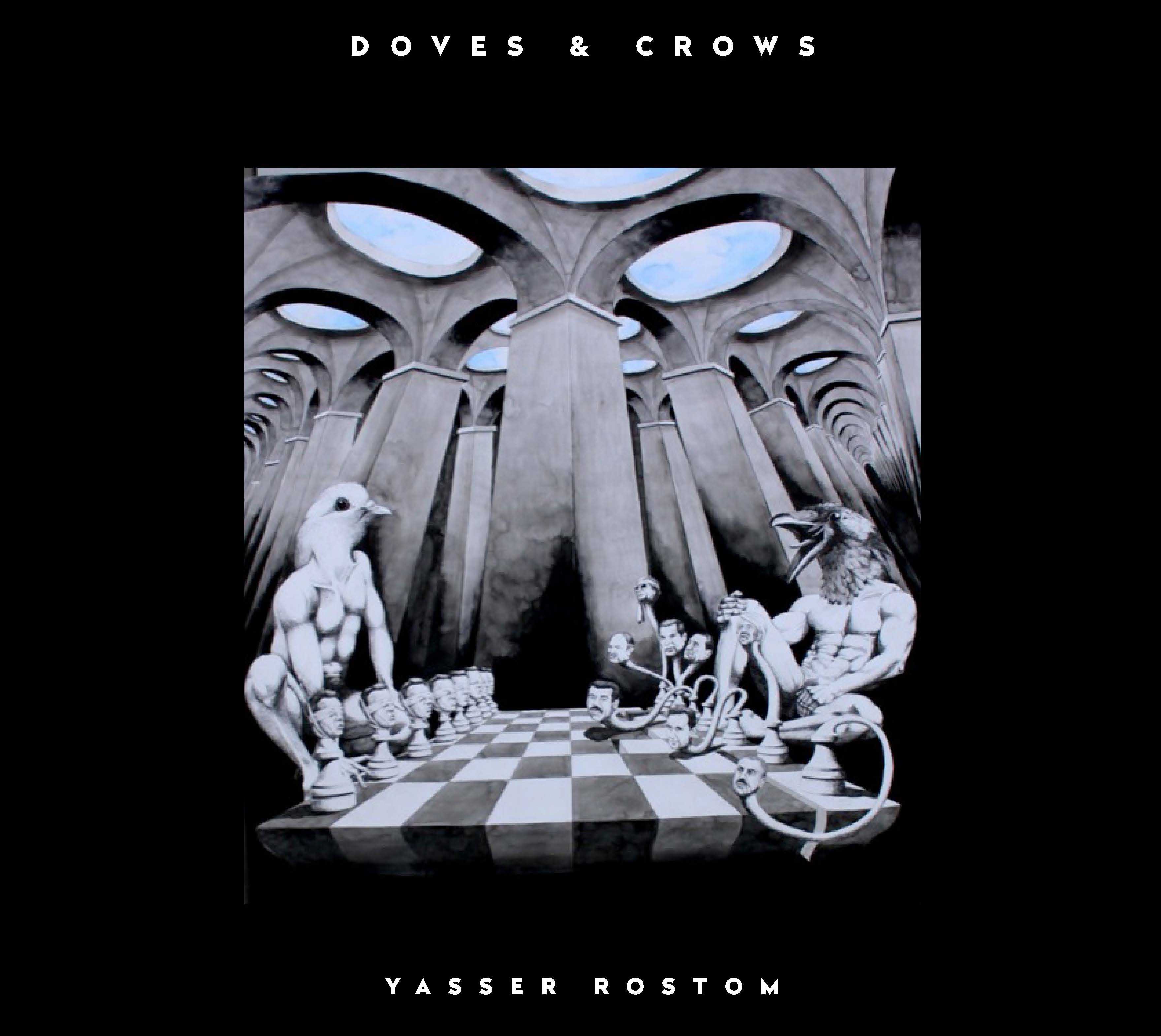
As we reflect on the fifth anniversary of a defining moment in our history, Cairo-based surrealist painter Yasser Rostom (1971) sheds light on different aspects of the current geopolitical events. Featuring a new body of work in Doves and Crows, Rostom mixes literalism with symbolism to create layers of meanings and accentuate the ills afflicting […]
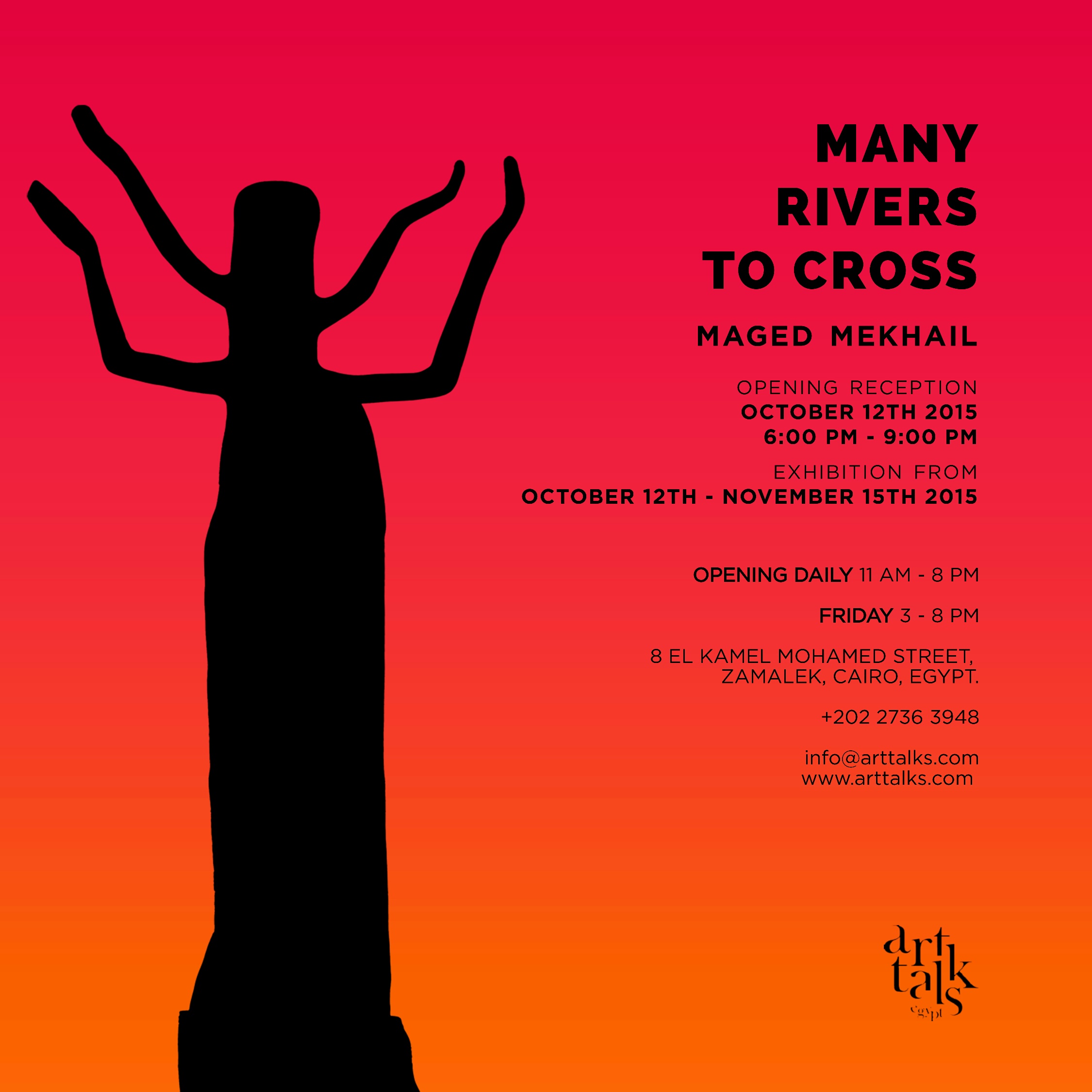
Maged Mekhail transports us back in time and space from Ancient Egypt to Babylon, and from Mesopotamia to further East. Rulers, traders, warriors, men of sciences and prophets crossed roads, ports and oceans seeking larger empires, flourishing trade and the spread of religion. Thousands of years later, their great grand-children are crossing the roads again – this time heading West, seeking refuge and escaping civil wars and violence. Crossing is no longer the means to enlarge one’s home, but rather the prevalent means of survival – to escape from home. In Many Rivers to Cross, painter and sculptor Maged Mekhail choses to ignore the slow decline of our present and brings to light our past by exploring the traces left behind the convergence of national, racial and ethical lines that supposedly should bond us together. He embraces the endless possibilities of remembrance and provides a multi-dimensional representation of the Egyptian world. The many different chapters across a span of thousands of years appear as fragments absorbed into Mikhail’s works, calling on a transcendent power to provide some meaning to guide our fragile present.
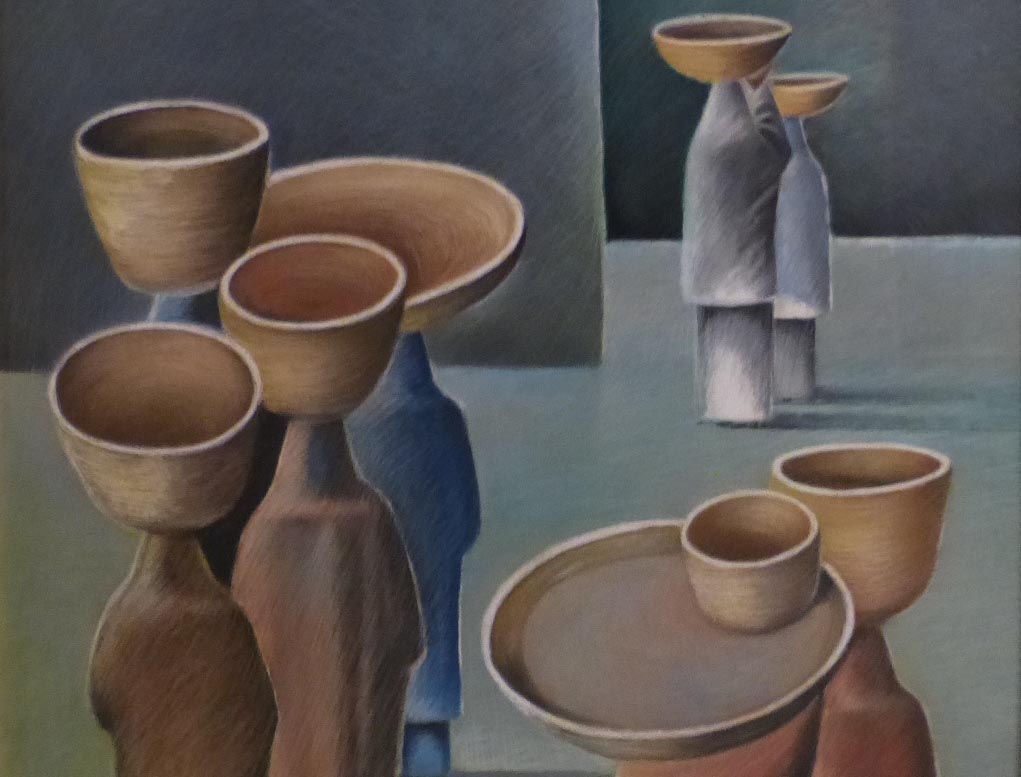
Time goes by. And the years go past. And somehow and for some unknown reasons, we remain in love, infatuated by its sand, smitten by its sun, struck by its Nile, burdened by its glorious past, and bonded to its people.
Sayed Saad el Din helps us understand, put some reasoning into this piercing feeling of attachment, of belonging to a land where kindness still exists hidden underneath the sand, where warmth wraps the mind and soul past a blazing sun, where harmony is concealed behind turmoil, and where hope prevails, though tomorrow is capricious.

Man is born free, yet everywhere he is in chains wrote Jean–Jacques Rousseau in the first pages of his famous Social Contract published in 1762. These ‘chains’ are the modes of conduct prescribed as binding by a controlling authority. Government (human laws), religion (divine laws) and society (customs) form the ‘authorities’. Any act contrary would […]

Man is born free, yet everywhere he is in chains wrote Jean–Jacques Rousseau in the first pages of his famous Social Contract published in 1762. These ‘chains’ are the modes of conduct prescribed as binding by a controlling authority. Government (human laws), religion (divine laws) and society (customs) form the ‘authorities’. Any act contrary would […]